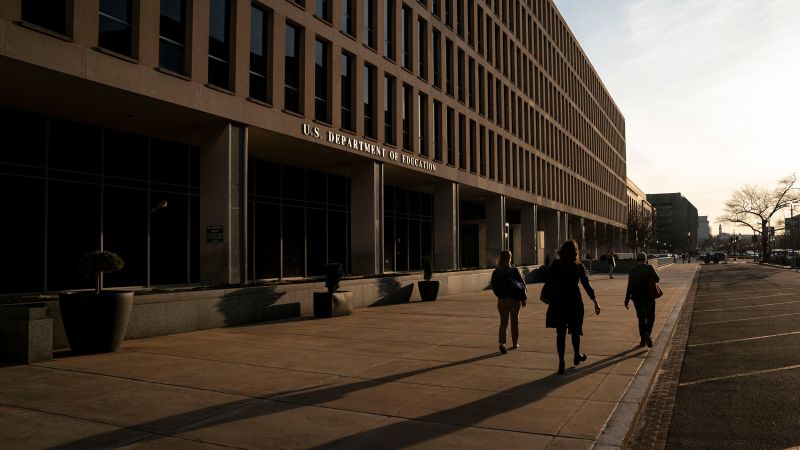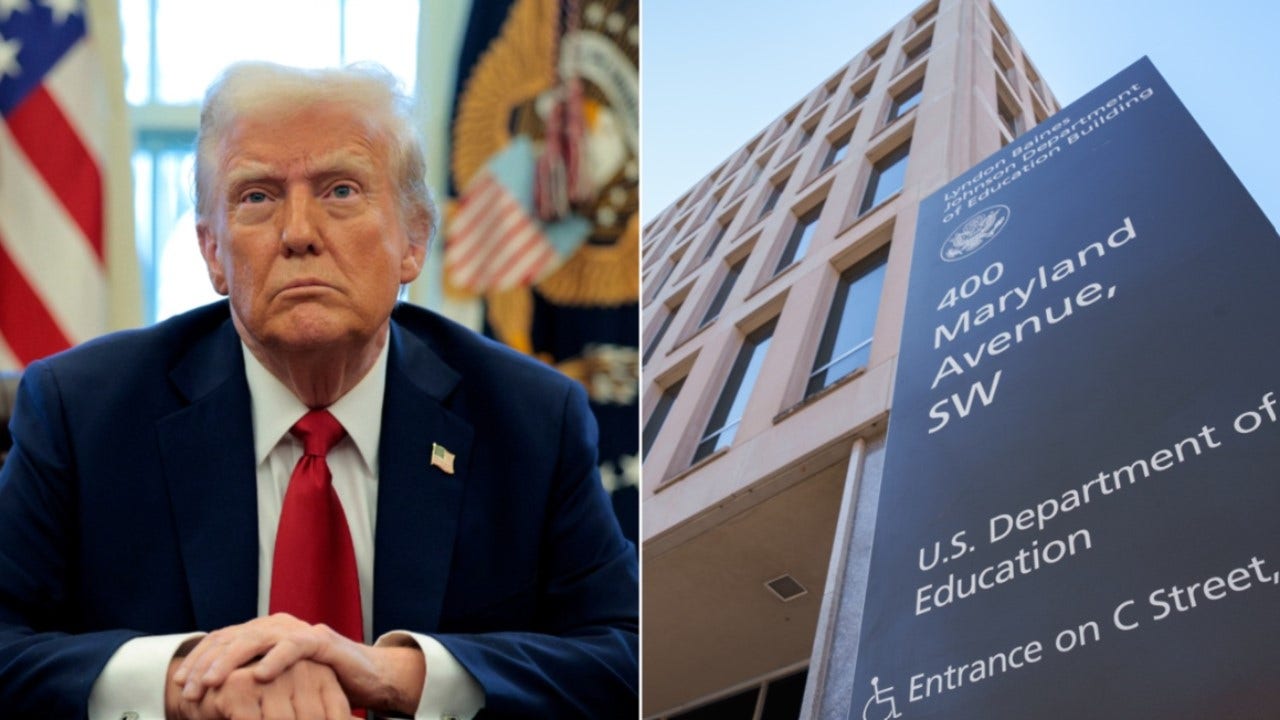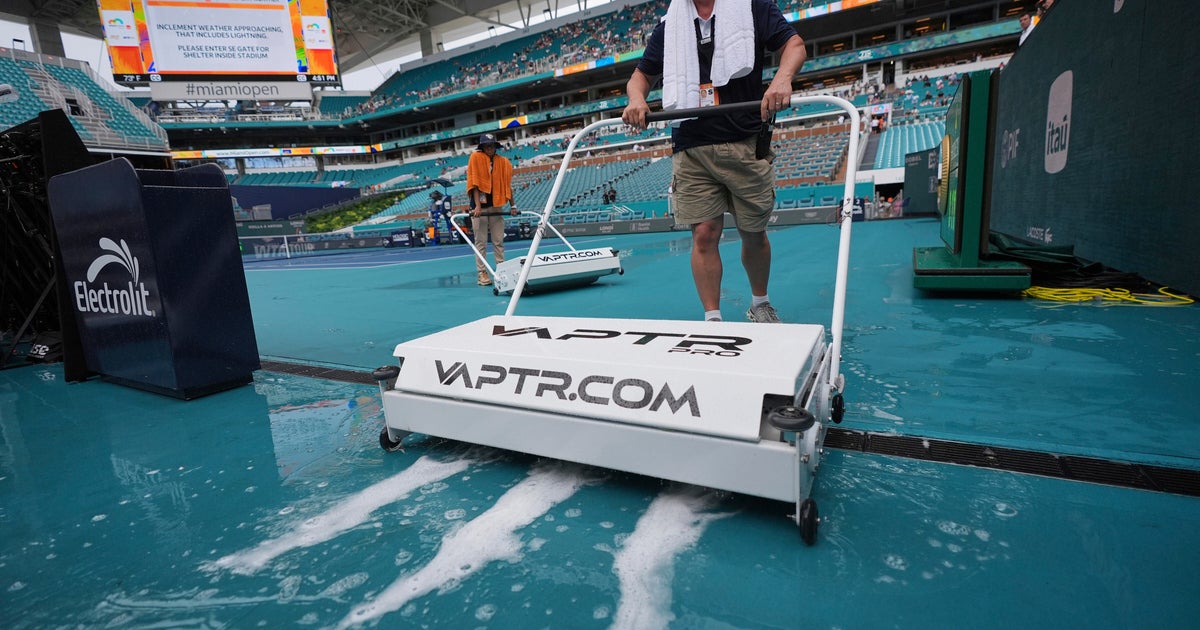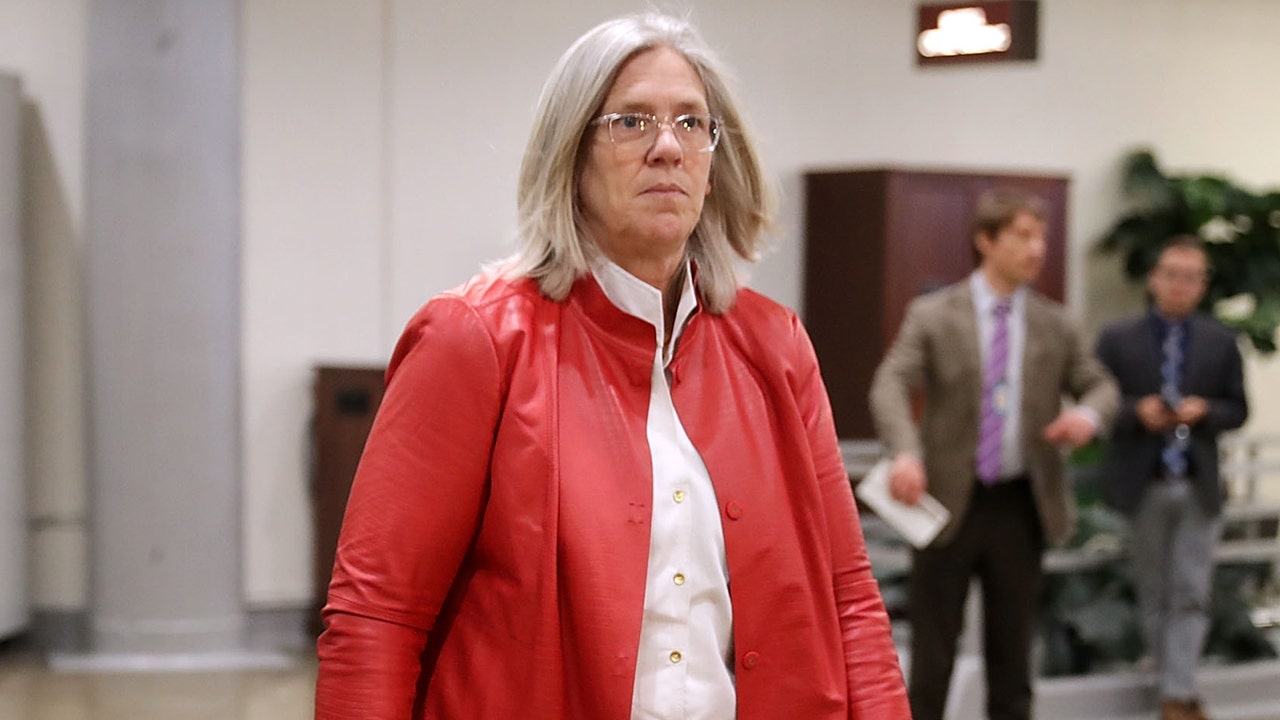Culture
What we learned about the College Football Playoff: Who’s in? Who’s safe? Who’s on bubble?

We have seen college football teams back into the College Football Playoff, losing their last regular-season or conference title game and still earning a spot in the four-team field.
This happened to Alabama in 2017 after losing the Iron Bowl and to Ohio State after it lost to Michigan in 2022. That was the same season TCU of the Big 12 became the first team to lose its conference championship game (to Kansas State) and still get in. In all those cases, that loss was the team’s only loss.
Now with a 12-team CFP, backing into the Playoff has a whole new meaning. Looking at you, Ohio State (10-2). Miami (10-2), too.
What we learned about the College Football Playoff in the last full weekend of the regular season is we have a pretty good idea of who will be in the College Football Playoff heading into championship weekend.
GO DEEPER
College Football Playoff 2024 projections: What now for Ohio State after Michigan upset?
Playing for a bye
No. 2 Ohio State’s faceplant against Michigan opened the door for No. 4 Penn State to reach the Big Ten Championship Game against No. 1 Oregon. Side note: Congratulations to the Ducks (12-0) for being the only FBS team to get through 12 games unscathed.
The matchup is set 🦁🦆
Early thoughts on who will win the B1G title game?#B1GFootball pic.twitter.com/F5josIsL2T
— Big Ten Football (@B1Gfootball) November 30, 2024
The Nittany Lions (11-1) and Ducks look to be safely into the bracket, with the winner getting a bye. Worst case for the Ducks is hosting a first-round game. Penn State could fall all the way out of a hosting spot, depending on how other championship games work out.
The SEC has a similar situation with No. 7 Georgia (10-2) facing No. 3 Texas (11-1), which clinched a spot after beating rival Texas A&M. We doubt the committee will punish Georgia for reaching the championship game, though it would be in the Bulldogs’ best interest to not get blown out by the Longhorns.
GEORGIA. TEXAS.
THE REMATCH FOR A TITLE. 🏆#SECChampionship pic.twitter.com/xpIiXZ65Rk
— Southeastern Conference (@SEC) December 1, 2024
Coming off that great escape against Georgia Tech on Friday night in eight OTs, Georgia doesn’t want to give the selection committee any reason to reconsider Alabama or Mississippi, both of which beat the Bulldogs.
Winner gets in, loser goes home
A wild Big 12 race ended somewhat routinely. All the favorites won this weekend, putting No. 18 Iowa State (10-2) and No. 16 Arizona State (10-2) in the conference title game. We’ll see what the penultimate rankings say Tuesday, but the committee has not been overly kind to the Big 12, which means only the winner will make the field as one of the five highest-ranked conference champions.
Sun Devils. Cyclones.
🏆
📍 Arlington, Texas.
📅 12.7.24
📺 ABC🎟️🔗: https://t.co/O7OY7wQRck pic.twitter.com/K5FENUTn1U
— Big 12 Conference (@Big12Conference) December 1, 2024
Same goes for the Mountain West, where No. 11 Boise State hosts No. 22 UNLV on Friday night. The American Athletic Conference will argue for Army (10-1) if it beats Tulane in that title game, but the Cadets failed their Notre Dame test badly and played one of the weakest schedules in the country.
🏈 Highlights from UNLV’s 38-14 win over Nevada!#MWFB | #BEaREBEL | #MWPathToThePlayoff pic.twitter.com/gUUX1K6wBB
— Mountain West (@MountainWest) December 1, 2024
An interesting race has developed between the Mountain West and Big 12 for the No. 4 seed and bye.
Ashton Jeanty and the Broncos (11-1) have held that spot in the last two rankings, comfortably ahead of the highest-ranked Big 12 team. How much the Big 12 can close the gap — if at all — is something to watch Tuesday.
The Broncos beat Oregon State 34-18 on Friday. On Saturday, Iowa State knocked off No. 24 Kansas State 29-21 and Arizona State thumped Arizona 49-7.
UNLV also being ranked — with two victories against Big 12 teams — makes it seem unlikely that the Big 12 title game winner will slingshot past Boise State if the Broncos win. And the Rebels will probably have a good case to make a big leap forward if they win on the Blue Turf.
Bid-stealer
Clemson had a weird day.
The Tigers lost 17-14 to rival South Carolina, with Cade Klubnik throwing a brutal interception in the waning moments when Clemson (9-3) was in position to tie it with a short field goal.
South Carolina holds off Clemson for its sixth-straight win‼️ pic.twitter.com/UOTr9dGWAv
— ESPN College Football (@ESPNCFB) November 30, 2024
But the Tigers did get the help they needed to earn a spot in the ACC Championship Game when Syracuse rallied from 21-0 down in the first half to beat No. 6 Miami 42-38.
“Hey, Dabo Swinney, congrats. I got you in, baby!” Orange coach Fran Brown said.
The Tigers will face No. 9 SMU (11-1). The Mustangs appear safely in the field no matter what happens in Charlotte, N.C. Win the conference, earn a bye. Easy.
Clemson has no path with a loss but shouldn’t have a problem being one of the five highest-ranked conference champions if it wins the ACC. Whether that’s good enough to get a top-four seed and a bye is iffy.
But if Clemson is in along with SMU, then another team looking good for an at-large spot right now is getting bumped.
Safe
Ohio State’s latest loss to Michigan was the worst one yet during this four-game skid in The Game.
Still, the second-ranked Buckeyes (10-2) are in a group that looks safely into the bracket even though they won’t play championship weekend.
No. 5 Notre Dame (11-1) closed the season with 10 straight victories. The Fighting Irish can’t earn a bye because they’re not in a conference but should have no trouble getting the first-round home game that they have been pointing toward since the end of last season.
Whether the Irish are seeded No. 5, 6 or 7 will be determined by the conference title games.
No. 8 Tennessee (10-2) wiped out an early deficit and beat Vanderbilt 36-23 on Saturday, giving the Volunteers a fairly stress-free week of waiting to find out if they will go on the road or host a first-round game.
As for the Buckeyes, being in position to back into the Playoff seemed to be no consolation for losing to Michigan again.
“I’m not there right now, quite honestly,” Buckeyes coach Ryan Day said when asked about resetting for a possible playoff run. “Still trying to digest everything that just happened, and I got a locker room full of guys who are just devastated.”

GO DEEPER
Meet 2024 Ohio State, the unhappiest Playoff team in college football history
Kinda safe
As we said, if Clemson wins somebody is getting bumped.
Who will be that someone?
How about Miami? The Hurricanes already handed the Tigers their spot in the ACC title game. The Canes had several great escapes early in the season but closed the year losing two of four. On the bright side, losing one-score games to Georgia Tech (7-5) with Haynes King and at Syracuse (9-3) is nothing to be ashamed of.
The Canes don’t have a bunch of wins against highly ranked teams, but the resume looks better than expected with Tech, Louisville (8-4), Duke (9-3) and Florida (7-5) all closing well.
“This team won 10 football games against some really good teams,” Miami coach Mario Cristobal told reporters after the loss to Syracuse.
What about Indiana?
This committee seems unlikely to turn away an 11-1 team, with its only loss at Ohio State, but the fact remains that outside of the Buckeyes, the only team the Hoosiers played that finished above .500 was Michigan (7-5).
Hey, Ohio State couldn’t beat the Wolverines at home and Indiana did. So that’s something.
Both the Hoosiers and Hurricanes should become big SMU fans.
SEC on the bubble
The committee hasn’t shown much interest in giving these three-loss SEC teams the benefit of a doubt, but the company line is every week the group starts with a blank sheet of paper, so we should be open-minded to a big shift.
The hot team is No. 15 South Carolina, which closed the season with six straight victories.
“If the committee’s job is to pick the 12 best teams, you tell me?” South Carolina coach Shane Beamer said.
Ironically, South Carolina’s case gets even better if Clemson wins the ACC, but Clemson winning the ACC also clutters the list of at-large teams by adding SMU.
The other issue South Carolina has is losses to the two teams ranked directly ahead of it: No. 13 Alabama and No. 14 Mississippi.
“Well, I think everyone’s aware of our schedule, and I don’t know the exact stats, but I know we beat four Top-25 teams throughout the year. And I don’t know how many, if anyone, has done that,” Crimson Tide coach Kalen DeBoer said.
It’s actually three since LSU dropped out. Still, victories against Georgia, Missouri and South Carolina are nice. Those losses to Oklahoma and Vanderbilt? Both finished 6-6.
Surely, SEC commissioner Greg Sankey will have something to say about it, but his opinion doesn’t count.
(Photo of South Carolina’s LaNorris Sellers running the ball against Clemson’s T.J. Parker: Isaiah Vazquez / Getty Images)

Culture
She wanted a law degree. Instead, Shakyla Hill became a quadruple-double threat

Making it to the WNBA or setting incredible NCAA records never crossed Shakyla Hill’s mind when she arrived at Grambling State in 2015.
She had other aspirations. She wanted to be a lawyer.
Recording a quadruple-double in a game was never part of the plan. Getting two in a career wasn’t even a thought.
But it happened for the student-athlete who preferred law over layups.
“I probably said my first two years a hundred times, I’m playing basketball to pay for school. I’m not in school to play basketball,” Hill told The Athletic. “But then the (first) quadruple-double happened, and it kind of just changed the trajectory of the things that I was supposed to do because it allowed me other opportunities to continue playing.”
As March Madness continues, she is paying attention to the tournament brackets on both the women’s and men’s sides. Basketball always will be of value to her life, but she’s now 28 and works in compliance. Hill plans to start law school in August.
She just happened to achieve phenomenal feats while playing collegiately — feats that aren’t expected to be duplicated any time soon.
The 5-foot-7 guard finished her career at Grambling as the only Division I player with two quadruple-doubles. Only five Division I NCAA players in the men’s and women’s game have ever achieved that stat once.
The first one was enough to catch the attention of a national audience — one that included NBA All-Stars. It was during Hill’s junior season, when she had 15 points, 10 assists, 10 rebounds and 10 steals in Grambling’s 93-71 victory over Alabama State on Jan. 3, 2018.
The effort drew praise from LeBron James, Chris Paul and James Harden.
Crazy!!! Not every day you see a quadruple-double! 👌🏾 https://t.co/ScVxD1XUdD
— Chris Paul (@CP3) January 4, 2018
“When they touched on it, I think that’s when I realized this is way bigger than I ever imagined,” Hill said. “Then it just got uncontrollable. I think the next day, that night, I had to turn off my phone because it was going crazy.”
Isayra Diaz was an assistant coach with Grambling at the time. She said when James spoke about it during a media session, that really got Hill excited.
“He commented on it saying how cool it was and all that, that no matter what level you’re on, it’s hard to do in general,” Diaz said. “For her to do it was pretty cool. I think we were on the bus for a road trip, and we showed her the (James) video. She started crying because he’s one of her favorite players of all time.
“When he is able to comment about that … it was cool.”
After notching just the 4th quadruple-double in women’s college basketball history (15p, 10r, 10a, 10s), Grambling State’s Shakyla Hill said she wanted to hear LeBron James’ reaction to her feat. Well, here it is: pic.twitter.com/IfWjzRcbJ8
— Dave McMenamin (@mcten) January 6, 2018
That game helped change Hill’s life … and then she did it again 13 months later.
On Feb. 2, 2019, Hill had 21 points, 13 rebounds, 13 assists and 10 steals in a 77-57 defeat of Arkansas-Pine Bluff. It was a special performance for her, as she is from Little Rock, Ark. Although the game was played in Louisiana, Hill, then a senior, was excited to play well against a team located 45 miles from her hometown.
That second quadruple-double, though unexpected, came with fewer surprises. After recording the first one, she was accustomed to the attention.
“I adjusted well. I feel like, definitely, those last two years kind of molded me into the person that I am now,” Hill said. “Everybody’s watching, and everything you did at that point in time was under a microscope. I think it kind of prepared me for the future and everything else.”
Hill credits her coaches for not allowing the moments to get too big. She was revered at Grambling, an HBCU best known athletically for legendary football coach Eddie Robinson and as the alma mater of Super Bowl XXII MVP Doug Williams and Pro Football Hall of Fame defender Willie Brown, among others.
After January 2018, media requests seemed nonstop for Hill. Fans and alumni wanted time and pictures — at home and on the road. Her social media following grew exponentially, and she became a celebrity in and outside of Grambling, La., with photos of her appearing in local stores and in the school café area.
A Super 1 Foods supermarket in Ruston, La., features Shakyla Hill on a billboard by the entrance and exit. (Photo courtesy of Shakyla Hill)
Hill joked about having to be photo-ready at all times. Normally, she was fine with simply wearing a headband that never matched her shirt. But quadruple-doubles are life-changing beyond the court.
The 2017-18 season ended with the Tigers winning the Southwestern Athletic Conference (SWAC) tournament as a No. 3 seed and making the NCAA Tournament for the first time in 19 years. Grambling lost to Baylor in the first round of the NCAA Tournament.
But the Tigers made waves with a guard who once had basketball as a secondary option.
“It just came natural to her,” former Grambling coach Freddie Murray said.
Hill was recruited to play at Grambling by David Pierre Jr., who now is an assistant coach at the University of Texas-Arlington. Hill credits her first Grambling coach, Nadine Domond, for pushing her on the court by using a stern approach when she arrived on campus. Domond now is the coach at Division II Virginia State.
Pierre was recruiting another player when he saw Hill on film. She wasn’t as big on playing AAU basketball during the offseason as other recruits. Pierre said Hill was more into spending time with her family than competing on the summer circuit, which might have contributed to larger schools missing out on signing her.
“Hill was one who could have played anywhere,” Pierre said.
The Grambling coaching staff knew Hill was talented coming out of high school. She was a sophomore when Hall High won the Arkansas Class 6A state championship. The coaches considered her a game changer in high school, but they wanted to see her do more with that talent in college.
“We stayed on her about getting in the gym, putting in extra time,” Murray said. “She’d come, then she’d leave, and then come back. and then she’d leave. Initially, I think she was just kind of getting caught up in college life and enjoying college. I think it didn’t really click with her until going into junior year, when she really, really started putting the time in.”
That’s when the Breakfast Club became the norm. The Breakfast Club was a group of players who met with Diaz for workouts at 4:30 a.m., 90 minutes before practice. That was in addition to workouts later in the day. That group helped Hill mature as a serious college athlete.
“It took some time, but when she started coming in the gym with me and coach Pierre, it showed improvement in her game,” Diaz said. “I think once she started realizing, ‘I’m consistent with it, and now I’m reaping what I sow,’ it just went on from there. Then she just kind of got addicted to doing actual workouts and things of that nature.
“She started falling in love with the whole Breakfast Club.”
Hill became more of a team leader. She remained someone her teammates could rely on, both on and off the court.
“As stern as we were with her, pushing her, challenging her, she was as stern on her teammates,” Pierre said. “Sometimes it’s hard being the best player and being liked. She was our best player, but they liked her and liked playing with her.”
Hill finished her college career as a first-team All-SWAC performer her last three seasons. She was the SWAC Defensive Player of the Year as a senior. And, of course, there were the two quadruple-doubles.
No longer was she playing only to pay for school.
Murray said Hill was projected as a third-round pick in the 2019 WNBA Draft after averaging 18.9 points, 7.6 rebounds, 6.3 assists and 4.6 steals during her senior year. But Hill went undrafted. Murray said colleagues with WNBA ties liked Hill’s athleticism, but they wanted to see more from her that translated to the pro game, like playing in the pick-and-roll with post players. The 14-player Grambling roster during the 2018-19 season had only one player taller than 6-foot-1, so guards like Hill were forced to play bigger than they were in most games.
When Hill was going through the draft process, no HBCU players had been drafted since 2002, when Andrea Gardner (Howard, second round), Amba Kongolo (North Carolina Central, fourth round) and Jacklyn Winfield (Southern, fourth round) were selected. It wasn’t until Ameshya Williams-Holliday (Jackson State, third round) in 2022 that a player from an HBCU was drafted.
Grambling has never had a player drafted to the WNBA, and Pierre believes Hill could have been based on how she fared against opponents from bigger schools. He also believes Hill would have been an even bigger sensation had she played in today’s name, image and likeness era.
“She just was in the wrong era,” Pierre said.
After the draft, Hill chose to play professionally overseas. She headed to Serbia to compete with ZKK Kraljevo of the First Women’s League of Serbia (ZLS).
And guess who recorded another quadruple-double?
On Jan 26, 2020, a month after her 24th birthday, Hill had 15 points, 10 rebounds, 10 assists and 10 steals in an 86-62 win against ZKK Partizan 1953.
“They made it a huge deal,” Hill said. “They threw me a huge party. I was on the news. It was a big deal there because (a quadruple-double) had never happened in that league.”
Covered two of these when @shakylaa_ was at @GSU_TIGERS and now she added to her impressive resume with a professional quadruple-double #womensbasketball🏀 #goat pic.twitter.com/OQOGnUfanv
— 𝘽𝙧𝙞𝙖𝙣 𝙃𝙤𝙬𝙖𝙧𝙙 (@brianhoward33) January 25, 2020
Her team went on to win the Serbian Cup. The team also played in the WABA (Women’s Adriatic Basketball Association) League and was 17-1 when Serbia shut down basketball because of the COVID-19 pandemic.
Hill averaged 13.3 points, 8.1 rebounds, 6.3 assists and 5.7 steals in the ZLS. She averaged 14.3 points, 6.4 rebounds, 6.1 assists and 4.2 steals in the WABA League and was the Defensive Player of the Year. She said she wanted her play that year to send a bigger message than delivering quality stats.
“How people talk about the SWAC and HBCU sports, they kind of downplay it,” Hill said. “That was kind of like vindication for myself, and also like, ‘OK, I am really a hard worker.’ Outside of the skills it takes to score, you definitely have to have a lot of grit and a lot of grind to get a quadruple-double because it’s not only time-consuming but energy-consuming.”
Hill wanted to give the WNBA a try in 2020, but she said a training camp contract with the Indiana Fever didn’t pan out because of the pandemic. She then played for Bashkimi Prizren of the Kosovo Women’s Basketball Superleague and won the Kosovo Cup in 2022.
Murray and Diaz said they weren’t surprised Hill had success in Europe. Diaz said she wouldn’t mind watching Hill give pro basketball another shot. Hill, however, is content with her current life. She said she is “completely done” with playing and also doesn’t have interest in coaching.
When she graduated from Grambling, Hill ranked third on the all-time scoring list with 2,052 points. She also ranked second all time in rebounds as a guard with 925.
Diaz said with the way Hill spoke during film sessions, it’s no surprise she’s pursuing law. Hill said she’s considering Southern, Howard and Texas Southern for law school. She also wouldn’t mind returning to her home state of Arkansas to practice.
“I can see her as a lawyer because she likes to debate and she likes to talk,” Pierre said. “She’s passionate. She lights up a room. She has a big personality that’s contagious.”
Hill is ready to take that passion to law school. She said she is leaning toward studying corporate law, but she is keeping her options open. Being a district attorney was a goal at one time.
The only thing that delayed that plan was basketball. And those quadruple-doubles.
(Photo: Ken Murray / Icon Sportswire via Getty Images)
Culture
Rays prepare for a steamy season of home-field challenges (and maybe home-field advantages)

TAMPA — Dan Moeller’s known for two decades what some of the kids on his staff are about to find out: When pulling a tarp across an infield in the rain, it’s best to pull from the corners. The guys who pull from the middle are the ones who trip, slip, and end up underneath the thing. Also, a wet tarp is a heavy tarp. Getting it off the field is often harder than getting it on.
“You feel it in your hammys,” Moeller said.
As director of projects and field operations for the Tampa Bay Rays, Moeller is in charge of the team’s grounds crew. He has seven full-time employees and eight part-time workers, and most of them gathered in the infield grass 32 minutes before first pitch on Friday to watch one of their own spray a yellow sunburst logo on the back of the mound.
For the first time ever, that logo fit more than the franchise’s name. The Rays really were playing baseball in the sun.
Friday’s season opener at George M. Steinbrenner Field could hardly have gone any better. Six months after Hurricane Milton shredded the roof of Tropicana Field, the Rays had a new home. The building was transformed with Rays signage. The temperature was 84 degrees with a cooling breeze to left field. Ryan Pepiot pitched six innings, a two-run rally tied the game in the seventh, and Kameron Misner — a 27-year-old on his first Opening Day roster — hit a walk-off homer in the ninth. The whole thing was a triumph of organizational problem-solving and late-inning execution. The Rays are undefeated.
And now the real challenge begins.
The Rays celebrate Kameron Misner’s walk-off to give them a 3-2 win in their opener at Steinbrenner Field. (Kim Klement Neitzel / Imagn Images)
It begins for infielders dripping with sweat in the Florida humidity, and for outfielders fighting the wind in an open-air stadium with no third deck. It begins for starting pitchers trying to get through six innings in the blazing summer heat, and for a coaching staff worried about rain delays and dreading bullpen-wrecking doubleheaders. There’s going to be no place in baseball this summer quite like Steinbrenner Field.
“We want to create some home-field advantage with that,” Rays manager Kevin Cash said. “I’d like to look up in two or three weeks when it gets hot in the summer and see that we are embracing it, and other teams are bitching about it.”
Moeller doesn’t want to hear any complaints. The mound is still 60 feet, six inches from home plate. The bases are still 90 feet apart. Baseball is baseball. But a Rays grounds crew that cut its teeth maintaining artificial turf in a climate-controlled environment now has to water and mow and maintain a ballfield in the sun.
Moeller and head groundskeeper Mike Deubel know what people assume about their jobs at Tropicana Field: that they’ve been in charge of carpet, basically. It’s a description that’s both completely wrong and utterly unfair (though, the fact they’ve had to sweep sunflower seeds with a dustpan and broom hasn’t helped dispel that notion). Do you know how to maintain moisture in infield dirt that’s being constantly sucked dry by the concrete underneath and the air conditioning above? It’s not easy.
But Moeller and his crew are now managing natural grass in a notoriously precarious climate that goes from blazing heat to sudden downpour in an instant. Moeller and Deubel have worked outside before. They know what they’re up against. Some of their staff, on the other hand, are in for a nightly lesson in patience, precision and wet socks.
Moeller increased his budget to afford extra clothes so that his crew can change when they get soaked in a popup shower, and he sent most of his crew to work for the Yankees during spring training so that they could learn first-hand how to prepare the field (some of the Yankees crew is sticking around to help).
The Rays’ crew actually got to pull the tarp a couple of times this spring, but they still haven’t pulled it in the middle of the eighth inning, when Pete Fairbanks is getting loose in the bullpen and a mid-game shower has become a total downpour because umpires waited too long, fingers crossed, hoping the rain might magically go away. They haven’t pulled the tarp when they’re already soaking wet, it’s getting late, and there’s no telling when they’re getting home.
“Welcome to the big leagues,” Moeller said.
That same idea holds true for the Rays players, as well. Many of them have been in the big leagues for years, but never quite like this. Pepiot spent a little more time in the sauna this spring. He also lingered in the hot tub and went on post-workout walks with his wife. Anything to get his body used to the heat.
“No one is ever going to get used to 105 and disgusting humidity,” Pepiot said. “But a little bit more acclimated to it.”
The Rays tested their players in spring training to determine how much they sweat — second baseman Brandon Lowe is a Tier 2, moderate sweater — and used that information to help individualize plans for how much water and sodium players are going to have to replace each night. Shortstop Taylor Walls, though, grew up in Georgia and played college ball at Florida State. He’s convinced the heat and humidity will be manageable for nine innings. He’s more worried about the rain, because when those sudden Gulf Coast showers linger, they’re going to rain out some ballgames, and doubleheaders in this climate are going to be exhausting.
That’s what Cash is most worried about, too. He can limit his team’s pregame work to keep players rested, and he can pump them full of water to keep them hydrated, but doubleheaders are hell on a pitching staff, and while Steinbrenner Field has fans with misters in the dugout, it has nothing to stop the rain.
Major League Baseball has tweaked the Rays schedule in deference to the Florida weather. The Rays play 19 home games between March 28 and April 20, meaning they’ll play almost a quarter of their home schedule before the summer even begins. The tradeoff is that the Rays will play only 12 home games between June 23 and August 18. They’re going to spend about half of August on a two-week, four-city, West Coast road trip that will include a stop in Sacramento to play the Athletics in the other minor league ballpark hosting Major League games this season.
Sun, rain, wind and shadows at home. Longer-than-usual trips on the road. It’s going to be completely unfamiliar, but the Rays won on Opening Day with a strong pitching staff and a deep bench, so maybe it’s not so different after all.
“A lot of differences,” Cash said. “But now we can probably take a breath, and we’ll spend probably hours talking about how we can make it to our advantage.”
(Top photo of Steinbrenner Field on Friday: Mike Carlson/MLB Photos via Getty Images)
Culture
‘Scaremongering’ or a cause for concern? Why the F1 engine debate is intensifying ahead of 2026

There has been growing excitement within Formula One over the potential return of the V10 engines. That roaring sound is part of the sport’s history and identity.
But the calls from senior figures in the F1 paddock, including the FIA president, Mohammed Ben Sulayem, to consider returning the loud engines used most recently 20 years ago, has also raised questions.
If simpler, louder and cheaper V10 engines, running on fully sustainable fuels and resulting in smaller and lighter car designs, are introduced in the coming years, what happens in the interim? And how would that impact the imminent power unit change scheduled for 2026?
F1’s stakeholders have been working on the 2026 engine rules, maintaining the V6 hybrid basis for the power units, for years. Since their approval in the summer of 2022, the ruleset has encouraged Audi, Ford (via Red Bull), and General Motors to join the grid, as well as reversing Honda’s decision to quit, all thanks to the sport’s commitment to fully sustainable fuels and greater electrification. In the case of Audi and Red Bull, the development of their new engine programs has required significant investment and recruitment, running into the hundreds of millions of dollars.
These rules were meant to cover a five-year cycle from 2026 through to the end of 2030. But will they even happen at all?
In a select media roundtable, including The Athletic, on Sunday in Shanghai, Nikolas Tombazis, the FIA’s single-seater director who helps shape F1’s future rules, framed the discussion over the future engine regulations as hinging on two questions.
The first relates to the long-term direction of the sport and whether, in the next three or four years, F1 wants a different type of power unit. “If the answer to that is yes, (that) we want to change something, then question number two is, ‘What we do in the intervening period?’” Tombazis said. That period begins next year.
“What I want to say at the start about 2026 is that, either way, whether we stay with the current regulations or whether we do the already approved new regulations, I think Formula One would be in a good place,” Tombazis said. “I don’t want it to be seen as sort of, ‘OK, we are panicking about 2026,’ because that is far from reality.”
On Friday in China, Red Bull team principal Christian Horner claimed there were “limitations” with next year’s rules that could impact the sport’s on-track spectacle due to the “shortcomings of the split in electrification and combustion” sources with the new power unit, which leans more on the electric power in the power unit. Those “limitations” would relate to consistent performance issues across the grid, which could affect the quality of competition and racing.
But Tombazis said he and the wider FIA did not share what he called a “scaremongering” view raised about the 2026 regulations’ potential impact on racing.
“I think there will be cars racing closely with each other, able to fight each other, and using driver skill, etc,” Tombazis said. “So fundamentally, I think I don’t share the panic stories. I remind people that there were panic stories for the ’22 regulations about how the cars would be massively slow.” This was when F1 last made a major overhaul to the aerodynamic regulations, which was not on the scale of 2026 when both the car designs and power units will change.
“I’m not saying everything was perfect,” Tombazis said of the 2022 change. “There are things with the benefit of hindsight we would have done differently. But I don’t think it was that disaster.”
Any change to the plans for next year would depend on the position of all the engine manufacturers. The investment and effort already put in has led the sport to a point where it’s “10 past midnight, and Cinderella has left the building,” to quote Horner.
Although Tombazis agreed that “the train has left the station to a large extent” for 2026, he noted that talk about the ‘interim’ period was fueled by chatter in the wake of Ben Sulayem, the FIA president, calling for an evaluation of a future switch to V10s.
Tombazis added that the FIA did not wish to impose any changes that would make it impossible for a team to compete. “We won’t just go on majorities,” he said. “We are trying to build a consensus here, and if that fails, then we will stay where we are (with the existing 2026 plan).”
If F1 power unit manufacturers were to feel it’s better to shelve the ’26 engines due to potential negative impacts on the sport — if the “scaremongering” were serious and concerns were widely shared — then mechanisms do exist that could lead to the status quo with the current specification of power units being the interim solution until a possible return to V10s.
But that would lead to other major knock-on effects and issues, given that Audi and Red Bull Powertrains/Ford haven’t produced a V6 hybrid engine for the current regulations. Other existing manufacturers have shifted all development to future engines. This, again, makes the idea of changing next year’s engine plans seem unthinkable.
Horner told reporters on Sunday in China he would be “very surprised” if the existing rules continued next year. “I think all teams are all in at the moment on ’26,” Horner said. “So we’d have to understand what it was all about.” He also denied Red Bull was pushing for a delay of the new rules, saying it was “geared up and ready for ’26.”
Toto Wolff, the Mercedes team principal, didn’t give much thought to the possibility of the 2026 changes not going ahead.
“It’s all going to be good,” he told reporters, calling the change an “exciting adventure” for the F1 grid that meant it should be celebrated, not derided by already looking at what follows the upcoming change.
Mercedes team principal Toto Wolff (Fadel Senna/AFP via Getty Images)
“This is where we should put our emphasis,” Wolff said. “This is what we should cheer for, and speak about, all the goodness that is going to bring rather than looking too far forward.”
A spokesperson for Audi issued a statement noting that the upcoming rule change and power unit design was “a key factor in Audi’s decision to enter Formula One. These power unit regulations reflect the same technological advancements that drive innovation in Audi’s road cars.” The German manufacturer has established its own F1 engine program and bought the Sauber team all on the basis of these rules — which now could only last a few years.
Assuming things go ahead as planned for 2026, as most still anticipate, the winds are currently blowing toward a shorter cycle from the original five years to change the power unit formula.
The desire for a long-term game plan is shared by senior figures throughout the paddock, meaning it’ll be a talking point in the coming months. The positions of the various power unit manufacturers could be influenced by their relative competitive standings in the political battles next year. If one team has produced the best power unit and has an advantage that would be hard to overcome, it’s only natural it might seek to protect that and kick any shift in regulations as far down the road as possible — and that its rivals would try to fight back.
Given how celebrated the 2026 engine rules were when they were announced in 2022 and the credit given to them when each new major manufacturer joined the grid, ditching them early would be strange. But Tombazis felt two primary factors had caused the change in stance. First, he cited the perception from manufacturers about electrification uptake across the automotive industry given a slow down in consumer interest.
“Back in 2020, 2021, when these discussions were had, the trend was pretty decisively in the direction of electrification,” he said. “I’m not saying that’s not happening, but certainly the views of the participants have changed since then.”
He also highlighted the costs of making the power units, admitting the current designs are “way too expensive.” When the 2026 rules were announced, improved cost control was heralded as one of their benefits, but Tombazis said their expense was a consideration.
“Even if Formula One is in very good health financially, it has become important also to protect it against world economy fluctuations, and I think we need to take these protective measures while the sun is shining and not when it starts raining, ideally,” he said. “The drive to cut costs is important to consider.
“All of these things are not things we would dream of doing without trying to respect all of the participants properly.”
Wolff said Mercedes was “always open” to different engine solutions, but that F1 had to consider what fans wanted too, and whether their views might have changed amid the shift toward a younger and more diverse fanbase than in the past. For those who came to the sport through “Drive to Survive,” the sound of V6 hybrids is all they will have known.
“All of this needs to be set as questions,” Wolff said. “What are the objectives for a future regulation change in a few years? Let’s analyze that based on data and come to a conclusion that is for the best of our sport.
“Because this is the single most important denominator between the FIA, Formula One, the teams, that we want to have the greatest product for our fans.”
(Top photo: Peter Parks/AFP via Getty Images)
-

 News1 week ago
News1 week agoMusk Offers $100 to Wisconsin Voters, Bringing Back a Controversial Tactic
-

 News1 week ago
News1 week agoHow a Major Democratic Law Firm Ended Up Bowing to Trump
-

 Education1 week ago
Education1 week agoICE Tells a Cornell Student Activist to Turn Himself In
-

 News1 week ago
News1 week agoWere the Kennedy Files a Bust? Not So Fast, Historians Say.
-

 News1 week ago
News1 week agoDismantling the Department of Education will strip resources from disabled children, parents and advocates say | CNN
-

 News6 days ago
News6 days agoWashington Bends to RFK Jr.’s ‘MAHA’ Agenda on Measles, Baby Formula and French Fries
-

 Politics1 week ago
Politics1 week agoStudent loans, Pell grants will continue despite Education Department downsizing, expert says
-

 News4 days ago
News4 days agoTrump Is Trying to Gain More Power Over Elections. Is His Effort Legal?



















